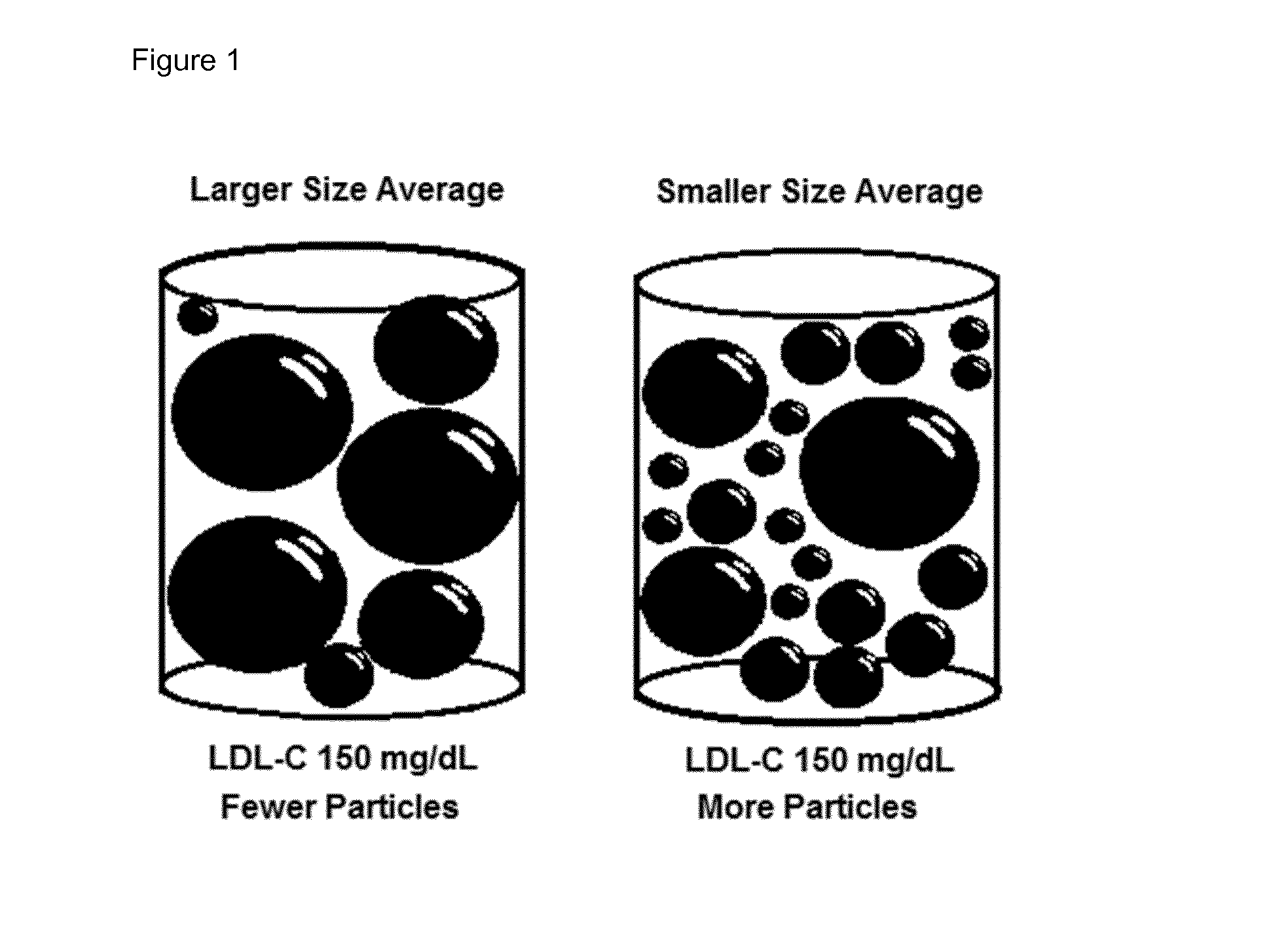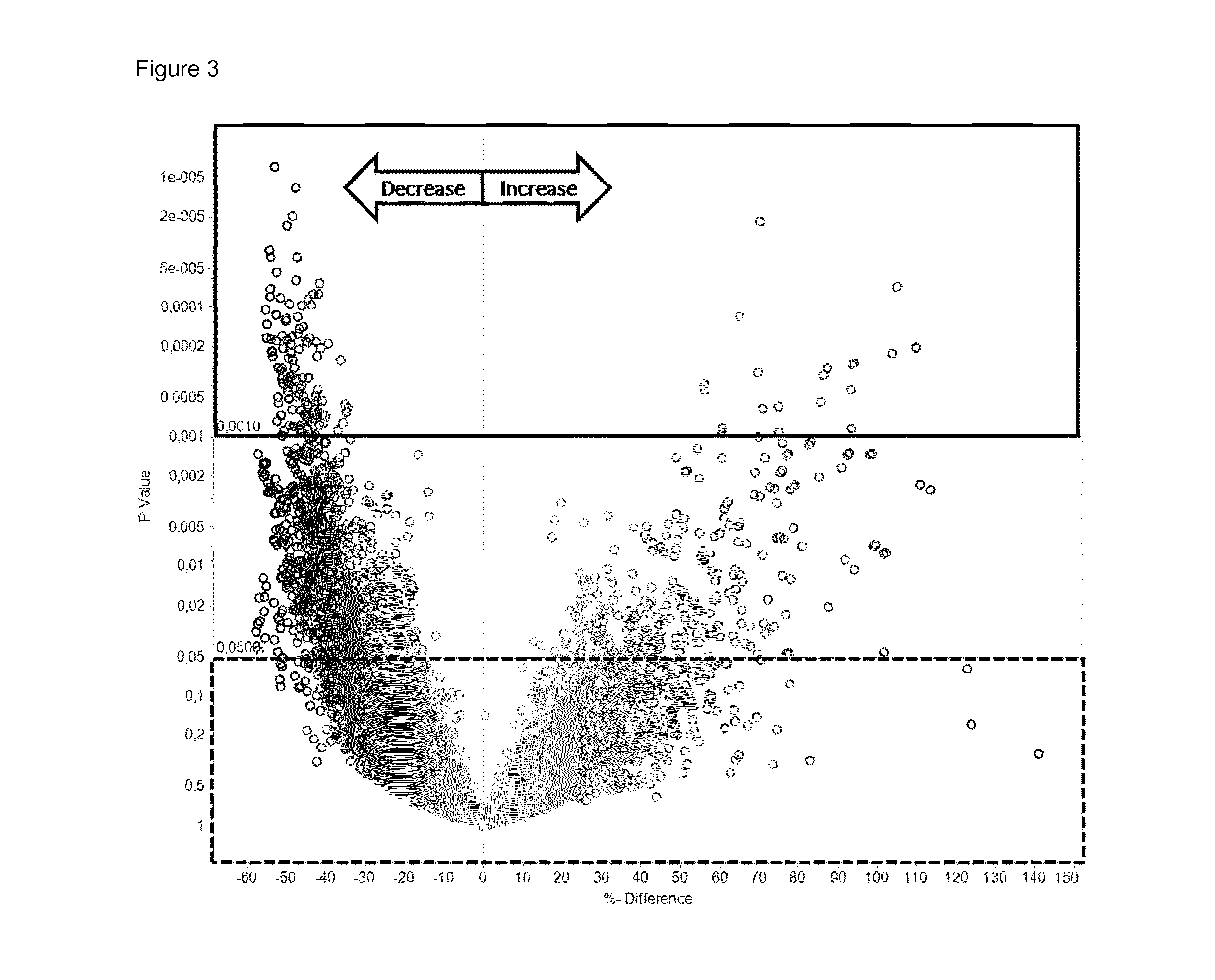Non-high density lipoprotein derived CVD markers
a high density lipoprotein and marker technology, applied in the field of non-high density lipoprotein derived cvd markers, can solve the problems of not being able to accurately reveal the risk of cardiovascular events of individuals, ldl-c may not be an optimal target for diagnostic/therapeutic purposes, and still a substantial residual risk of developing cvd/cad in statin treated patients
- Summary
- Abstract
- Description
- Claims
- Application Information
AI Technical Summary
Benefits of technology
Problems solved by technology
Method used
Image
Examples
example 1
Materials and Methods
[0170]Serum samples were obtained from the Health2000 Survey, which included a thorough health examination and interview of the participants. Patients with coronary symptoms (angina pectoris or myocardial infarction) and healthy subjects were included.
[0171]Low-density lipoprotein (LDL) particles were fractionated from serum samples of 19 patients with coronary artery disease (non-lipid based diagnosis) and 10 healthy controls by sequential differential micro-ultracentrifugation using potassium bromide solution as described in Stah∪man et al. LDL particles were collected in one fraction at density d=1.063. Beckman Coulter Optima MAX-XP ultracentrifuge and TLA-120.2 rotor were used for lipoprotein isolation.
[0172]Total protein content of the LDL samples was determined using the Micro BCA™ Protein Assay Kit prior to lipid extraction. Lipid extraction followed by established / validated platforms providing quantitative molecular lipidomics analyses of LDL samples wer...
example 2
Results
[0180]Standard lipid parameters are routinely measured from plasma / serum samples of individuals to assess the risk of CVD of individuals. As part of the Health2000 Survey, a thorough health examination including standard lipid parameters was performed to obtain the overall health status of the general population. In general, high levels of apolipoprotein B, total cholesterol (total-C), LDL cholesterol (LDL-C), and triglycerides, and on the other hand low levels of HDL cholesterol (HDL-C), are regarded as risk factors. An elevated ratio of total vs. HDL cholesterol is also used to evaluate the risk of CVD. As discussed earlier however, these parameters fail to identify a large proportion of CVD patients. We compared the results from standard lipid tests of patients with verified CVD to those of control individuals. There were no significant differences in any of the standard lipid tests between cases and controls, as shown in FIG. 2A. All of these currently used CVD markers we...
PUM
| Property | Measurement | Unit |
|---|---|---|
| temperature | aaaaa | aaaaa |
| concentration ratio | aaaaa | aaaaa |
| concentration | aaaaa | aaaaa |
Abstract
Description
Claims
Application Information
 Login to View More
Login to View More - R&D
- Intellectual Property
- Life Sciences
- Materials
- Tech Scout
- Unparalleled Data Quality
- Higher Quality Content
- 60% Fewer Hallucinations
Browse by: Latest US Patents, China's latest patents, Technical Efficacy Thesaurus, Application Domain, Technology Topic, Popular Technical Reports.
© 2025 PatSnap. All rights reserved.Legal|Privacy policy|Modern Slavery Act Transparency Statement|Sitemap|About US| Contact US: help@patsnap.com



